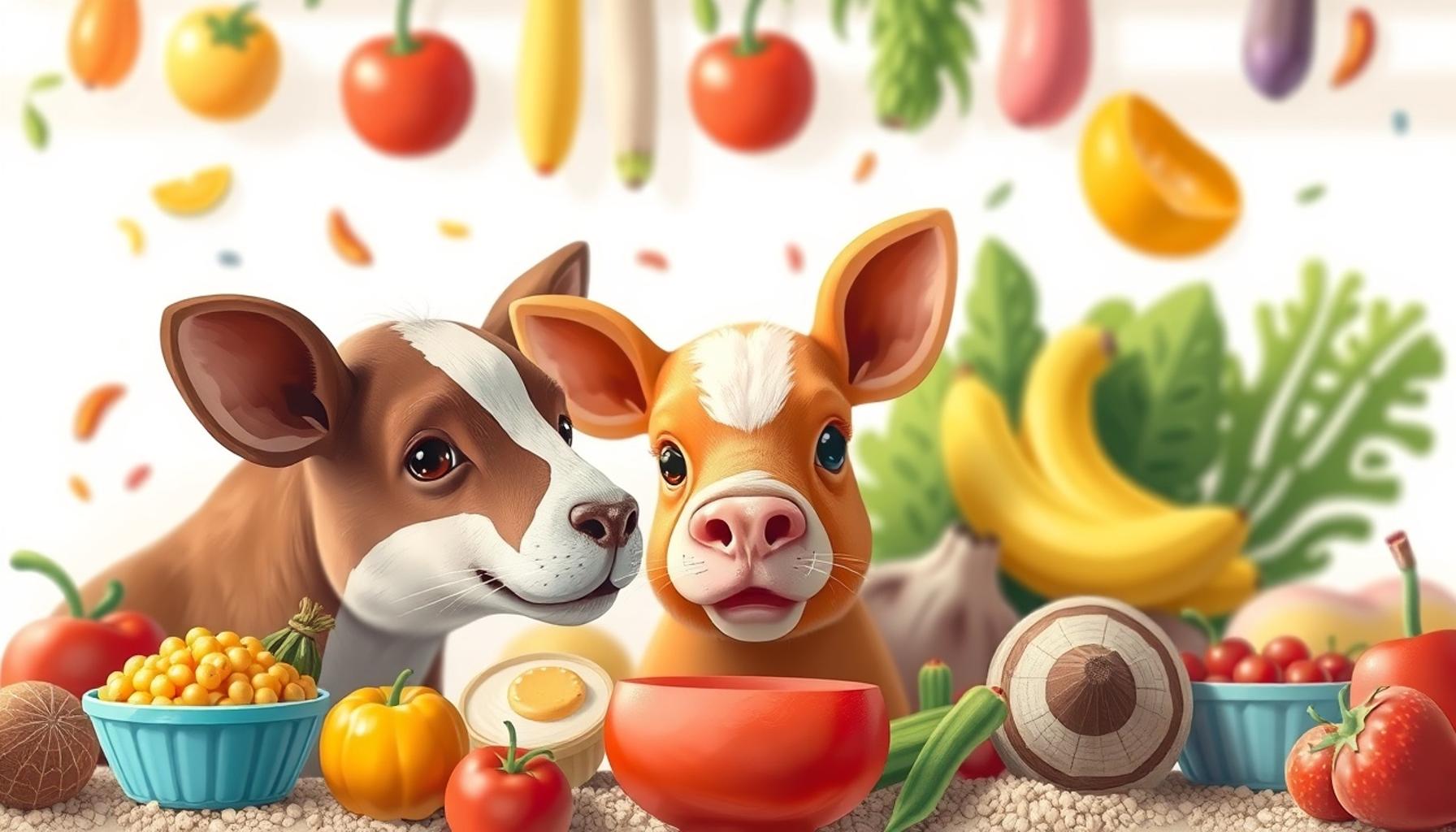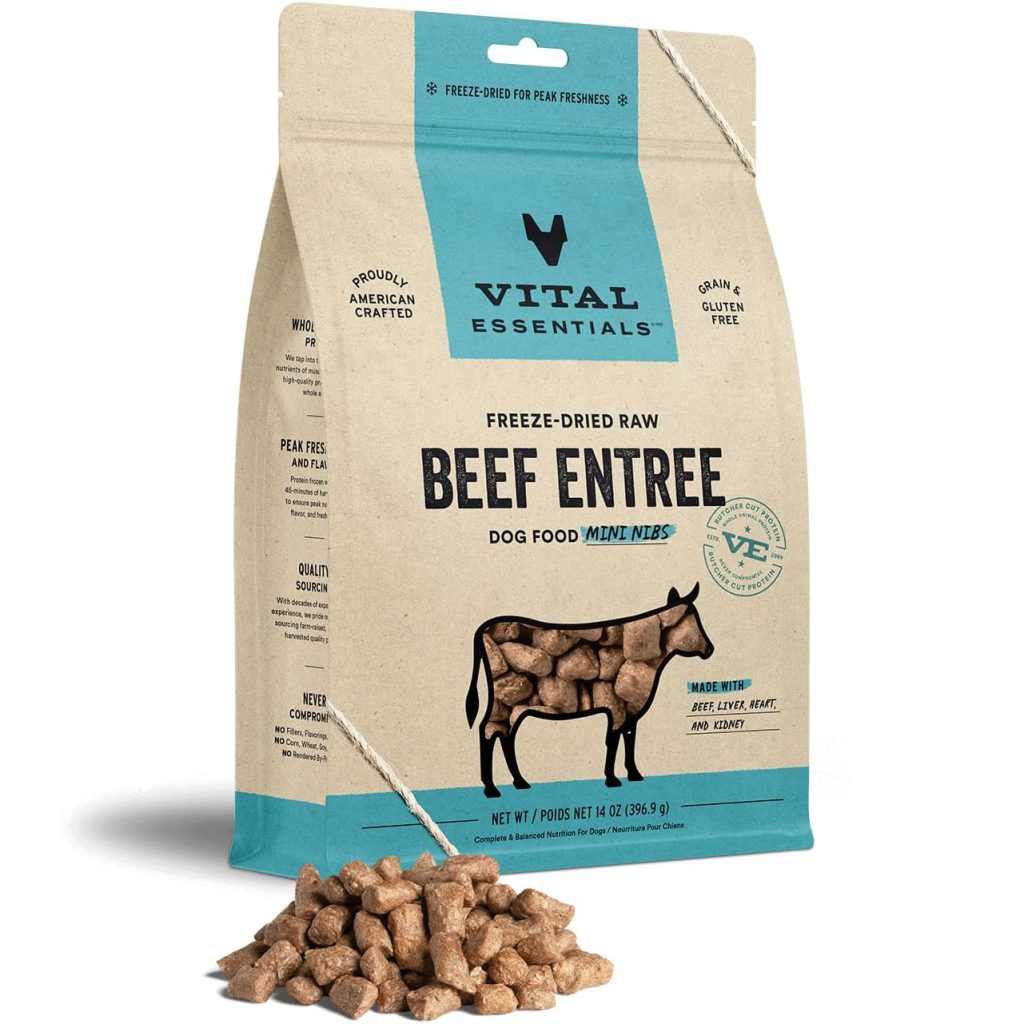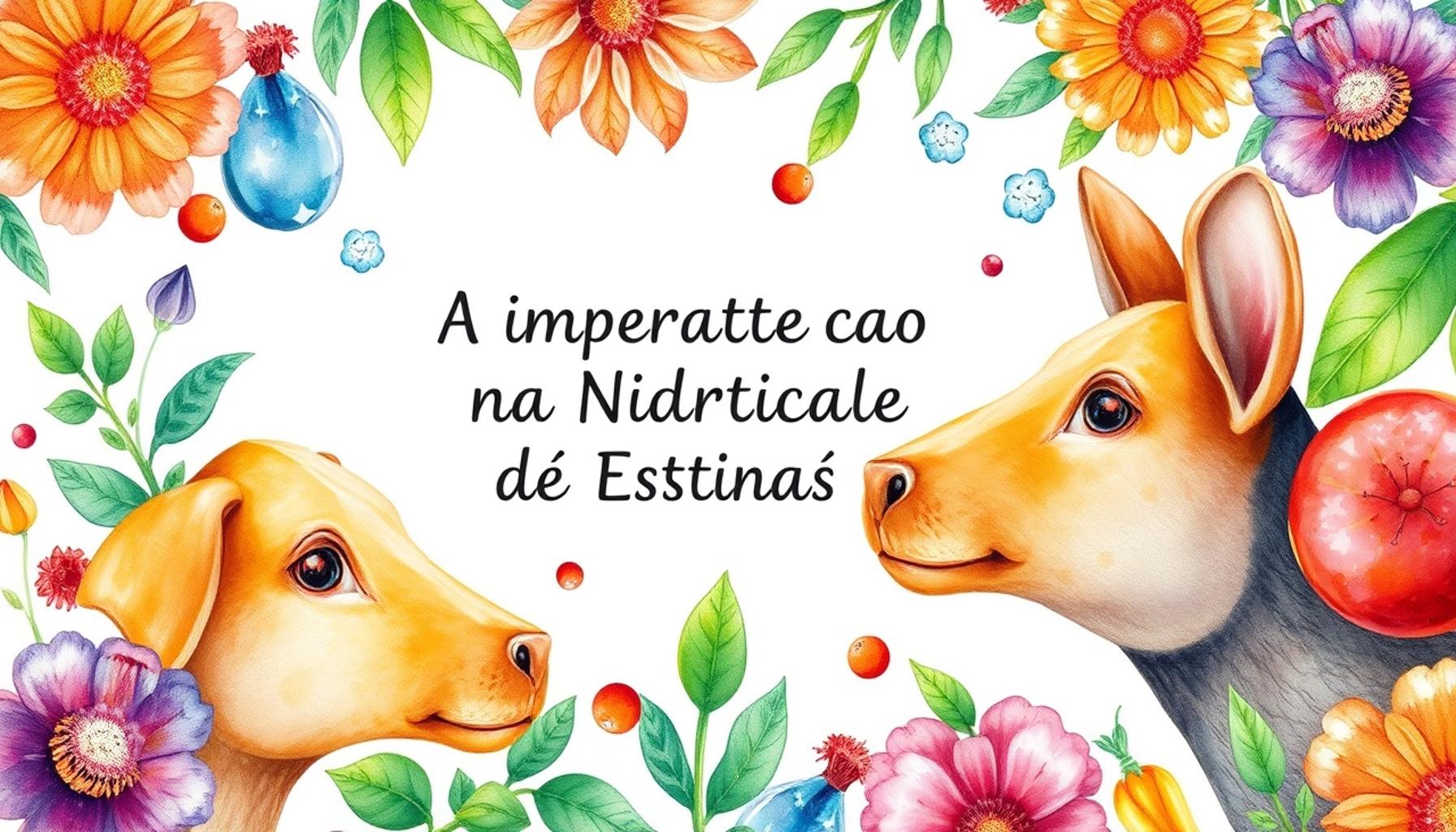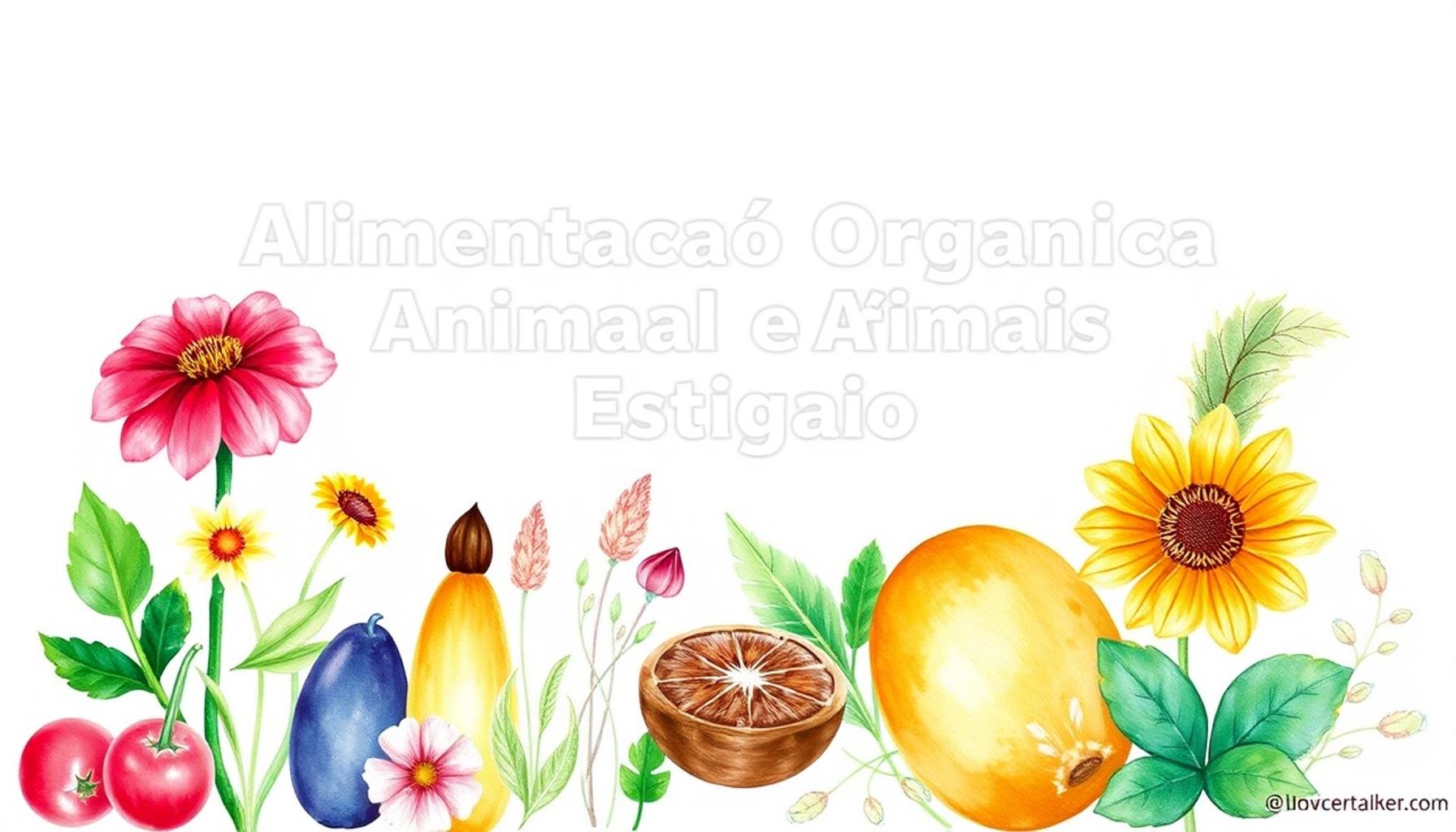The Impact of Commercial vs. Homemade Food on Pet Health: A Critical Analysis

The Importance of Pet Nutrition
The welfare of our beloved pets is a growing concern for many pet owners. A significant aspect influencing their health lies in the choice of food. The debate surrounding commercial vs. homemade pet food is becoming more prominent, with implications that warrant careful consideration.
Understanding the differences can aid pet owners in making informed decisions regarding their pets’ diets. Here are some critical areas to explore:
Nutrition
One of the primary considerations in the commercial vs. homemade pet food debate is nutrition. Commercial pet foods are generally formulated to meet the nutritional requirements set by organizations like the Association of American Feed Control Officials (AAFCO). This means they often contain a balanced mix of protein, fats, carbohydrates, vitamins, and minerals that ensure pets receive essential nutrients.
In contrast, homemade diets can sometimes struggle to meet these balanced nutrient profiles unless they are carefully crafted and monitored. For instance, a popular homemade pet food may consist of rice and chicken. However, if pet owners neglect to add important nutrients found in vegetables or specific supplements, their pets may develop deficiencies over time.
Ingredients
Another key factor is the ingredients used in pet food. Commercial brands often rely on a range of fillers, preservatives, and artificial flavors to enhance flavor and extend shelf life. While some of these additives are safe, others may not be ideal for your pet’s health.

On the other hand, homemade diets allow pet owners to have complete control over the quality of the ingredients used. For instance, using organic chicken, fresh vegetables, and whole grains can provide a wholesome alternative tailored to specific health needs. This control over ingredients is particularly relevant in places like Nigeria, where many pet owners might find it challenging to access reliable commercial options or may be wary of the quality of those available.
Health Implications
The choice between commercial and homemade diets can have profound health implications. Obesity, common in pets due to overfeeding and poor dietary choices, can lead to severe health issues like diabetes and heart disease. Understanding portion sizes and balanced meals is crucial, irrespective of the food source.
Additionally, many pets suffer from allergies, often tied to specific ingredients found in commercial foods. By switching to a homemade diet, owners might identify problematic ingredients and eliminate them. For instance, if a pet shows signs of food sensitivity, a vet-recommended homemade dietary plan could alleviate these symptoms more effectively than commercial options.
Conclusion
In many cases, particularly in regions like Nigeria where access to quality commercial pet food can be erratic, owners are increasingly turning to homemade alternatives. This shift raises vital questions about the overall nutritional balance and potential risks associated with DIY diets.
Diving deeper into this topic could reveal essential guidelines that ensure pets enjoy optimal health. Understanding the pros and cons of different pet food types will empower owners to make informed choices. Ultimately, the impact of these dietary decisions extends beyond mere preference; they distinctly shape our pets’ long-term well-being and quality of life.
CHECK OUT: Click here to explore more
Nutritional Balance: The Core of Pet Health
When it comes to understanding the impact of commercial vs. homemade pet food on animal health, we must first consider the nutritional balance that each option provides. Commercial pet foods are often backed by extensive research and development, designed to comply with stringent industry standards. For instance, a majority of these products bear labels indicating they meet the nutritional profiles set by the Association of American Feed Control Officials (AAFCO). Such formulations take into account various life stages and dietary needs, ensuring that pets receive well-rounded nutrition in every meal.
In contrast, homemade pet diets require a notable commitment from pet owners to guarantee a well-rounded nutrient profile. While the ability to customize meals is appealing, many pet owners may inadvertently create diets that lack essential nutrients. For example, a prevalent homemade recipe might consist solely of carbohydrates—like rice or pasta—and protein sources such as chicken or beef. Without incorporating the necessary vitamins and minerals through vegetables or specific supplements, pets can suffer from health issues, including weakened immune systems and poor coat quality. A study published in the Journal of Animal Science highlights that pets consuming incomplete homemade diets could face deficiencies that manifest as lethargy, poor digestion, or recurrent infections.
Ingredient Quality and Source
The selection and quality of ingredients in pet food significantly influence health outcomes. Commercial pet food brands vary widely in their ingredient sourcing. Some low-budget options are notorious for including fillers and by-products, which might compromise the health of pets in the long run. Common additives, such as artificial colors, flavors, and preservatives, while generally recognized as safe, ignite varying degrees of concern among conscientious pet owners.
On the other hand, homemade pet diets offer unparalleled control over ingredient quality. This flexibility allows owners to choose organic vegetables, high-quality proteins, and wholesome grains that cater to their pets’ specific needs. For instance, Nigerian pet owners might opt for locally sourced fish, yam, and vegetables to create satisfying meals tailored to regional availability and their pets’ preferences. This adaptability is crucial, particularly in areas where commercial brands may not align with local health considerations or may be difficult to procure consistently.
The Challenge of Portion Control
Attention to portion control is vital, regardless of food source. Overfeeding, often prevalent among pet owners who believe more food equates to better care, is a primary factor leading to pet obesity. According to the World Small Animal Veterinary Association, obesity is becoming increasingly common in pets and can trigger serious health complications such as heart disease, diabetes, and joint issues. The challenge rises when switching to homemade diets, as many owners may not be familiar with the appropriate serving sizes, leading to overfeeding.
- Consider consulting with a veterinarian for customized feeding guidelines.
- Keep track of your pet’s weight while adjusting food portions as needed.
- Include a variety of protein sources and vegetables in homemade meals to maintain interest and nutritional balance.
In conclusion, the debate surrounding commercial vs. homemade pet food is more than just a matter of preference; it involves critical evaluations of nutrition, ingredient quality, and serving sizes. Pet owners must navigate these facets carefully to ensure that their furry companions thrive and maintain optimal health.
| Category | Description |
|---|---|
| Nutritional Quality | Commercial pet foods often contain added vitamins and minerals while homemade diets can be tailored but may lack vital nutrients without proper knowledge. |
| Ingredients Transparency | Homemade pet food allows owners to monitor ingredients closely, whereas commercial brands may include fillers and preservatives that can impact pet health. |
The discussion surrounding the impact of commercial versus homemade food on pet health has gained traction among pet owners. One critical aspect is the nutritional quality; commercial pet foods are formulated with specific guidelines to ensure balanced nutrition, including necessary vitamins and minerals. However, they can also contain unclear ingredients or fillers that raise concerns among discerning pet parents. On the other hand, homemade diets allow for personal customization, enabling owners to select fresh and organic ingredients. Yet, this approach requires a strong understanding of pet nutritional needs to avoid deficiencies. Many pet owners might not have access to comprehensive resources, which raises the question of whether they are meeting all essential dietary requirements adequately. The ingredients transparency in homemade food is often seen as a significant advantage, allowing vigilant pet owners to avoid potentially harmful additives found in commercial options. Some proprietary pet foods may utilize vague terms for their ingredients, leaving pet owners in the dark about what they are truly feeding their furry companions. As this critical analysis unfolds, further examination of these factors will shed light on how they influence long-term pet health outcomes. There is much to discover and explore within this ongoing debate.
YOU MAY ALSO LIKE: Read read another article
Long-term Health Implications
Understanding the long-term health implications of commercial vs. homemade pet food requires a critical examination of how each option influences various health conditions over a pet’s lifespan. Chronic issues such as obesity, diabetes, and food allergies can stem from improper nutrition. For instance, a study published in the Nigerian Veterinary Journal suggests that pets fed low-quality commercial diets are more prone to obesity due to high carbohydrate content and ineffective energy utilization, leading to a cascade of related health issues.
Homemade diets, while potentially more nutritious when prepared correctly, can also lead to long-term health issues if not balanced. An imbalance of essential fatty acids or calcium-to-phosphorus ratios can contribute to orthopedic problems or skin diseases over time. This is particularly relevant in growing dogs, where specific nutritional needs are paramount for proper skeletal development. A holistic approach to homemade diets requires not just creativity but a thorough understanding of canine nutrition. Veterinarians often recommend using resources such as veterinary nutritionists to ensure that homemade meals meet the necessary guidelines, especially for puppies and special-needs animals.
Cultural Influences and Dietary Preferences
Cultural influences also play a significant role in pet dietary choices, particularly in Nigeria, where traditional foods might dominate household meal preparations. Many pet owners may lean towards utilizing locally available ingredients, such as garri or beans, to create homemade dishes for their pets. Yet, while this local approach can enhance ingredient quality, it necessitates an understanding of which foods are safe and beneficial for pets. For instance, certain human foods, such as onions and chocolate, are toxic to pets. Consequently, understanding the boundary between safe and harmful ingredients is critical for ensuring safety and health.
Also, the shift from traditional feeding practices to modern commercial pet foods has sparked debate among pet owners. Some argue that switching to commercial options can lead to health improvements due to the scientifically formulated nature of these products, while others fear that reliance on mass-produced food strips away the cultural connection established through traditional homemade meals. This balancing act becomes more complicated with the influx of international pet food brands that may not be tailored to local needs or acceptability, making it essential for pet owners to remain vigilant about ingredient sourcing and overall quality.
Cost Considerations and Accessibility
Cost is another determining factor that influences the choice between commercial and homemade pet food. High-quality commercial options often come with a significant price tag, which can be prohibitive for pet owners, particularly in low-income regions. Conversely, homemade diets can be more economical when utilizing locally sourced ingredients. However, the cost of supplements needed to meet dietary needs can quickly add up, presenting another layer of complexity in meal preparation.
- Conducting cost-benefit analyses can help pet owners determine the best dietary approach for their pets.
- Utilizing community resources or co-ops to access high-quality ingredients at a lower price can be beneficial.
- Prioritizing nutrition over mere cost when making dietary choices can lead to better long-term health outcomes for pets.
The decision between commercial and homemade food remains a multifaceted issue that requires careful consideration of nutritional balance, ingredient quality, cultural influences, long-term health implications, and cost constraints. Each of these factors significantly influences pet health and well-being, calling for informed decisions from pet owners experienced in the art of nutrition.
ADDITIONAL INSIGHTS: Expand your understanding here
Conclusion
In navigating the complex landscape of commercial vs. homemade pet food, pet owners face an array of choices that greatly influence their pets’ health and well-being. The critical analysis reveals that while commercial foods may offer convenience and scientifically formulated nutrition, they can also present risks related to low-quality ingredients and potential allergens, particularly for pets with specific dietary sensitivities. Conversely, homemade diets allow for greater control over ingredients and can be tailored to meet unique health requirements, but they demand a thorough understanding of nutrition to avoid deficiencies or imbalances.
As pet ownership becomes increasingly common in Nigeria, owners are challenged by cultural influences, cost considerations, and access to quality ingredients. Educating oneself on which locally available foods benefit or harm pets is essential, especially as traditional meals evolve with modern dietary trends. Furthermore, it is crucial for pet owners to conduct cost analyses that weigh the long-term health benefits against immediate financial implications of either option.
Ultimately, the decision between commercial and homemade food should not be taken lightly. Each choice carries the possibility of positive or negative implications for pet health. Engaging with veterinarians or veterinary nutritionists can facilitate informed choices that prioritize the health of pets while honoring cultural preferences and economic realities. By critically evaluating the content, ensuring nutritional adequacy, and maintaining an awareness of how these diet choices affect long-term health outcomes, pet owners can significantly enhance their pets’ quality of life.


